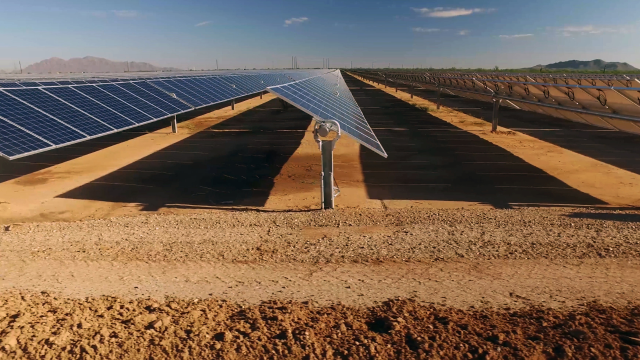The CEO of the Australian Renewable Energy Agency (ARENA) Darren Miller has explained just how ultra low-cost solar could be “the hero in our superpower vision”.
Solar is likely to be the go-to energy source for Australia in the future, given the country’s huge landmass, abundance of sunshine, and low population density, but ultra low-cost solar is a specific version of the tech that offers a next step in the shift to renewable energy with a mission statement pretty much written on the tin.
“Ultra low-cost solar will more efficiently convert sunlight to energy. It will be manufactured from affordable, abundant, safe and stable materials. And finally, it will be deployed in the field at low cost and in a highly efficient, automated way,” Miller said.
“Once operational, ultra low-cost solar will require little ongoing maintenance and have a longer lifetime than today’s solar technology. Its low risk will attract financial backing from private investors and our financial institutions.”
On July 19, ARENA published a white paper on the technology and how it could be effectively deployed, and turn Australia into an energy superpower, to communicate the need for the cheap technology and why Australian developers should focus on it.
Not that the miraculous idea of “what if solar, but cheaper” is a new thing, mind you. Tech innovations like printed solar panels show huge potential, and attempts to cut out rare resources and high-cost parts of the tech have been ongoing.
“Unless we make ultra low-cost solar a reality in Australia, we may never unlock our renewable superpower potential. We will limit the Australian economy’s options to adapt and thrive in the 21st century,” Miller added.
It’s expected that low-cost solar will bridge the gap between the need for renewable energy and the reliance on finite materials, such as lithium, steel and ammonia. This being said, Miller also noted that there will of course be a need for other renewable energy sources. Cheaper wind energy, low-cost firming, transmission solutions and flexibility on the side of demand are also needed.
Miller reckons three major things need to happen: firstly, scientists and engineers need to keep developing cheaper solar solutions, potentially pushing energy conversion numbers up to 30 per cent (up from 22 per cent, which is what solar panels can currently do). Secondly, manufacturers must also develop cheaper ways of installing solar, with Miller thinking pre-assembly modules and GPS-guided robots could be the way to go.
Then, Miller said that solar panel deployers must work with First Nations people and Australian communities to make the land available for solar panel installation.
“In addition, we need to take a serious look at opportunities to manufacture more of the components needed. Currently, China dominates the global supply chain for solar. We must increase our resilience to future supply chain shocks by building local capabilities,” Miller added.
ARENA has a goal that by 2030, solar panels should be able to convert 30 per cent of solar energy into electricity, and that installation costs for solar panels cost 30 cents per watt. The plan is dubbed Solar 30 30 30, and it’s difficult to not want to get behind.
